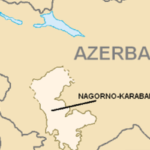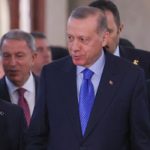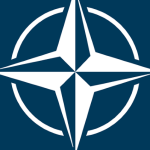Italy is a welcoming country and the whole world acknowledges this. Even if sometimes, unfortunately, there is some country that takes advantage of our generosity by evading the distribution of the "quotas" of refugees agreed and due to it to assist those fleeing wars.
In reality, despite the relative decrease in the number of arrivals in Italy, also caused by the pandemic emergency, over the years there have been problems due to the insufficient number of places available in the ordinary reception system, so much so that most migrants are often hosted in extraordinary reception centers. In Italy, in fact, there are two reception systems: the ordinary and the extraordinary one.
At first, after a phase of initial assistance and identification, migrants entering our country are taken to First Reception Centers (CPA). This is followed by a phase of second reception, the Sai (Reception and Integration System). This is the ordinary reception, organized in projects owned by the municipalities.
Since last August, when the Taliban resettled in Kabul, there has been renewed talk of Afghan refugees and how Italy could manage their reception. In our country at least a part of Afghan asylum seekers had direct access to ordinary reception centers. In particular, the Armed Forces engaged in the "Aquila Omnia" operation, immediately following the entry of the Taliban into Kabul, and they brought about 5,000 refugees to Italy. In this case, these were people particularly compromised in activities of collaboration with the various NATO contingents and their families, possible targets of revenge by the Taliban themselves.
From the beginning of the year to the date of March 2, 2022, about 5500 immigrant landings have been counted by the Ministry of Interior. It should be pointed out right away that flows to Europe via the Mediterranean have had a progressive and continuous reduction from 2015 (when there was a peak in arrivals, largely due to refugees from the last war in the region, the one in Syria) to 2020. 2021 sees numbers roughly in line with 2020 with a likely slight uptick due to the continuing crisis in Libya in which some of the warring factions continue to exploit the illegal immigration business to fund themselves. Italy remains the main country of arrival, followed by Spain and, with greatly reduced numbers (thanks to agreements with Turkey), Greece. Those who arrive in Italy with the boats of hope are mainly young males under 30 years of age and the percentage of women, elderly and very young, fleeing from war zones, is minimal.
The drama of these hours emerges from the numbers of refugees from the conflict in Ukraine who, according to the latest update, with figures that are continually evolving, would appear to be around 900,000 people (mostly women, children and the elderly) on the move towards neighboring countries. The number continues to grow at a rapid pace and it is assumed that we are about to be confronted with what could become the biggest refugee crisis in Europe of the century. UNHCR has estimated that more than four million Ukrainians may seek shelter and assistance in neighboring and friendly countries.
Italy is closer to Ukraine than perceived. Trieste is closer to Lviv than to Reggio Calabria. More than half of the Ukrainians who have already left the country have entered Poland: mostly women and children because men in good physical condition are taking their families at the border and returning to risk their lives to fight the war against the Russian invader.
In Italy, after the strong and total condemnation of the aggression, since it is not easy even to send trucks of medicines, food, basic necessities and clothing for the Ukrainian population, are organizing regional and municipal reception plans that will be managed by the Prefectures. The head of the Civil Protection Fabrizio Curcio has suggested that the definition of aid and reception plans may vary depending on the scenario and evolving agreements, at the moment not yet defined. "Certainly the Italian Regions will have a major role, but they will have to link up with the Prefectures and with the consolidated chain of the Ministry.". All of the above highlights how much Italian hosting staff at various levels will have to consider and change.
For the Afghans it was a matter of welcoming, for the most part, complete and closed family units that need housing family module, a job for the head of the family (often with a high level of education) or women who intend/can work because family conditions allow it, food respectful of Islamic rules, places of Islamic worship, schools for young people (including the Italian language) and health care similar to the traditional Italian one.
For immigrants from North Africa, however, it is a matter of continuing the well-established process of placement in housing facilities, for the most part for adult men only and, therefore, without problems for the separation of the sexes, with very few health complications other than those related to the pandemic, with no high level of need for schooling other than for the Italian language (for those who want it) and the aforementioned needs related to the Islamic cult of the majority of those who land in Italy.
Those arriving from Ukraine are, for the most part, women, elderly and young people/children from a state with a good standard of living who are fleeing conflict and who maintain the hope of returning to their beloved country in the near future. This differentiates them from Afghans who, with the country in the hands of the Taliban, have very little chance of a peaceful return, and from immigrants from North Africa who, in most cases, aspire to find a living by reaching Northern Europe or finding a lasting welcome in Italy.
Returning to the current very sad Ukrainian diaspora, there will be a need for housing facilities for families, with geriatric, gynecological and pediatric health care. Religious and food integration will be easier and, as in the case of Afghans, it is necessary to activate a school system for young people. At a later stage, based on the development of the crisis, we will move on to provide a system of integration into the job market for those who can do so without disconnecting the incoming families. I am certain, however, as a result of my prolonged visit to the country, that all Ukrainian refugees will want to return home as soon as the conditions are right.
The careful selection of Afghans and the origin of Ukrainians almost completely exclude problems of infiltration, among the refugees, of elements dangerous to Italian and European national security. The same is not true for immigration through the Mediterranean, but the Ministry of Interior and the Intelligence Services are working excellently in controlling the attitudes and origins of those who land and the actions of expulsion continue without interruption.
The proven logistics of Italian hospitality and the generosity of our people will make us, as always, proud of ourselves. Maximum support therefore to the National Civil Defence, to our Armed Forces and to all the regional and municipal reception system. For example, in Rome there are about 20.000 Ukrainians registered and many of them will be ready to cooperate to assist both directly and indirectly their compatriots. Our Ukrainian friends know that Italy does not intend to turn away.
Senior Fellow of the Machiavelli Center for Political and Strategic Studies. Brigadier General (Aux.) of the Italian Army, member of the Directorate of the NATO Defense College Foundation. For years director of the Middle East Faculty within the NATO Defense College.









Quanto costa il sistema di accoglienza descritto? è sostenibile nella attuale contingenza economica? Dovremmo piuttosto riflettere sulle ricadute interne delle sanzioni alla Russia cui l’Italia ha aderito. Si dovrebbe valutare di negoziare la riduzione di tali sanzioni in sede di trattative diplomatiche. Come al solito l’Italia è legata a un carro che procede in direzione opposta ai suoi interessi e gioca a fare la prima della classe. L’umore dei cittadini è molto distante dalla retorica buonista dominante nei mezzi di informazione.